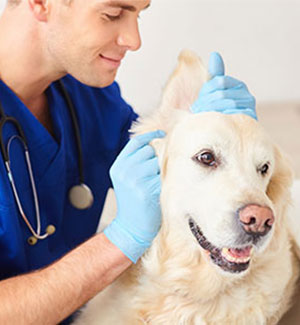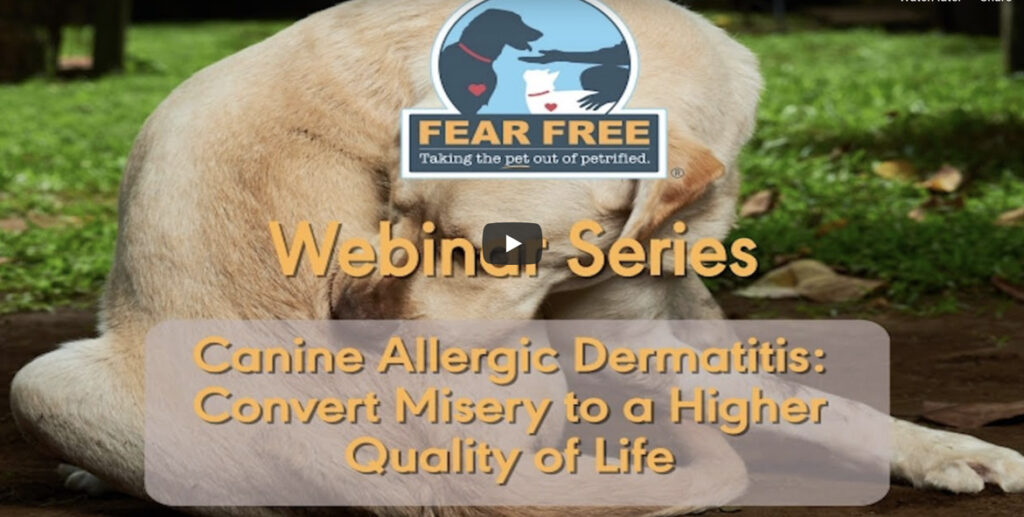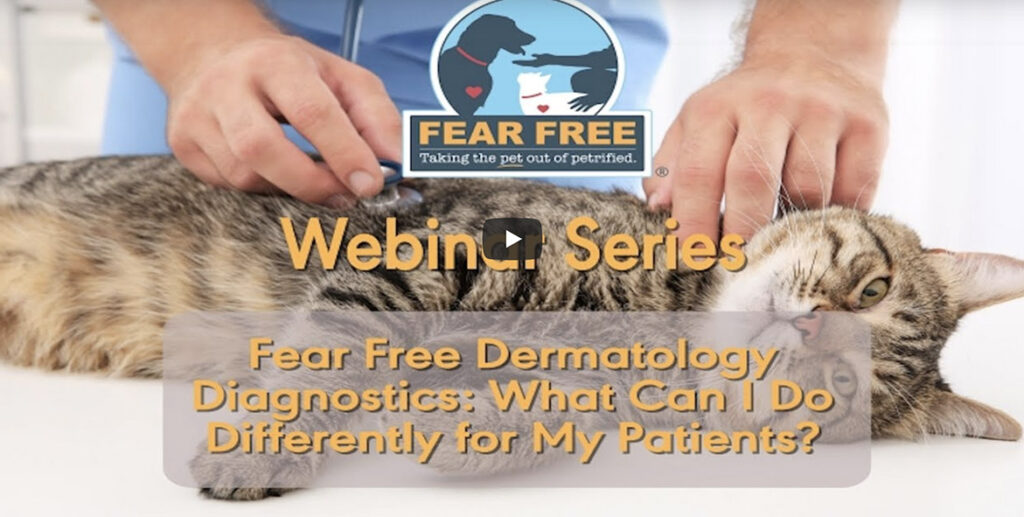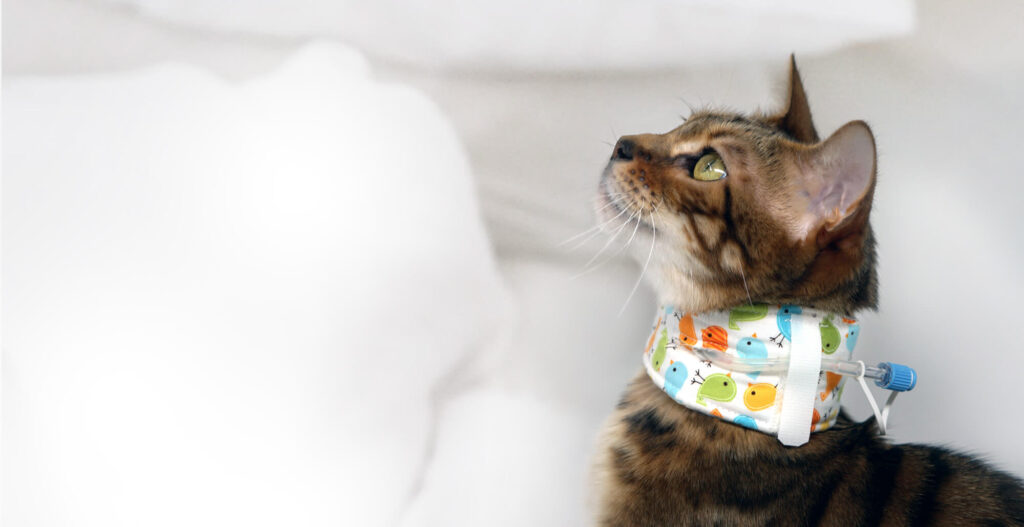
Medicating Dorie has always been a challenge because she can sniff out anything no matter how well I try to hide it, but during her illness it became impossible. Even worse, the fear, anxiety, and stress (FAS) she experienced during my attempts to medicate her were almost as traumatizing to me as a pet parent as they were to her. When she didn’t respond to hospitalization I brought her to a specialty hospital for endoscopic biopsies, and during her anesthetic procedure the internist placed an esophagostomy tube (E tube).
The sense of relief I felt at having the option to medicate her and feed her through the tube without causing FAS was immense. Dorie was ultimately diagnosed with inflammatory bowel disease and required weeks of immunosuppressive doses of steroids before she started body slamming her toys again, and without her E tube I wonder if she would have recovered.
As Fear Free practitioners we always try to consider a pet’s wants vs. needs, but when treatments are medically indicated for an unwilling sick pet, we have to find a different approach. The use of E tubes provides a compassionate solution to disease management that should be considered for a variety of illnesses and not only as a last resort.
Indications for E Tube Placement
Historically, many veterinarians have recommended E tubes for gastrointestinal diseases such as feline hepatic lipidosis, cholangiohepatitis, IBD, and pancreatitis. These pets can have a prolonged road to recovery and the conversation about E tube placement should be started with clients early–when their pet has had anorexia reported for a few days. At best, syringe feeding an icteric cat with hepatic lipidosis can fall short of the caloric needs required for their recovery. At worst, it can result in aspiration pneumonia, fear of the client, and injuries as the client struggles with the pet.
Conditions that cause oral pain, such as facial trauma and significant dental disease, are additional indications for E tubes when we consider the role of pain in contributing to FAS.
Rather than sending a pet home after full-mouth extractions with some canned food and oral pain medications and hoping for the best, we can have a proactive discussion with the client about an E tube at the time of surgery. This is particularly important in cases where the pet has already had decreased appetite preoperatively and adds minimal time and cost to the procedure. In cases of oral neoplasia where the client is not ready to pursue humane euthanasia, placement of an E tube to deliver nutrition and analgesia may provide at least some relief to the patient until the next quality of life discussion with the client.
In pets with chronic kidney disease, an E tube can make a huge impact on long-term management and maintaining the client-pet bond. I remember attempting to give subcutaneous fluids to my first cat with kidney disease and managing exactly one poke before she jumped off her cat perch and ran away while the fluid line whipped around, spraying fluids everywhere. Some clients are also uncomfortable with handling needles and having to inject their pet with fluids and can inadvertently poke themselves in the process. An E tube can allow a client to administer daily fluids and anti-nausea medications easily without causing FAS or discomfort.
In addition, many pets with CKD find renal diets unpalatable and develop nausea, inappetence, and weight loss as their azotemia worsens, leading their owners to feed them whatever they will eat. Placement of an E tube ensures that their pet will receive both adequate nutrition needed to maintain their body weight as well as the recommended prescription diet to try to slow progression of their disease.
While there may be an increased level of anesthetic risk for patients with CKD or other underlying health conditions, placement of an E tube1 is very quick (typically less than 30 minutes for placement and radiographic confirmation of location) and can provide weeks to months to even years of benefit. Once the stoma heals, it may be possible to exchange the tube through the same stoma site without general anesthesia by using topical anesthesia and the techniques outlined by Dr. Sheri Ross in 2016, in which she describes one feline patient with CKD whose stoma site was maintained for almost 5 years using E tube exchanges2 .
Client Education
Perhaps one of the challenging aspects of E tubes is overcoming the perceived stigma attached to the tube itself. Some clients may agree to several days of hospitalization for their pet but draw the line at an E tube because they associate it with end-of-life care. While this may be true with some conditions such as oral neoplasia, in others an E tube can actually save their pet’s life or improve management of a chronic disease. Most pets with an E tube also don’t seem to notice it at all, and will eat, drink, groom, and even body slam their toys with their E tube in place.
Some clients may also feel squeamish at the prospect of handling and using an E tube for their pets. Washable, patterned neck wraps such as the Kitty Kollar3 or Kanine Kollar have been amazing at minimizing the “medical” aspect of E tubes, and their website provides a great starting point for educating owners when initiating an E tube conversation. Once the E tube is placed and the pet is ready to be released from the hospital, provide written discharge instructions4 with a recommended schedule for medicating, watering, feeding, and cleaning based on that pet’s calculated water and caloric requirements to ensure that the pet is getting everything they need. Scheduling a teleconsult the following day and printing a weight chart for the patient at every recheck will provide additional guidance and positive reinforcement. When your client realizes how easy it is to treat their pet with the E tube, you can consider asking them to be a resource for others who are on the fence about having one placed for their pet.
Summary
E tubes can be used successfully for a variety of acute and chronic illnesses, and their ability to remove the FAS associated with treatments is significant. Weighing the risks vs. benefits of the brief anesthesia needed for placement is important, but when routine medical management is inadequate, we need to be proactive in advocating for our patients and work together to destigmatize these invaluable tools.
Resources
- https://www.cliniciansbrief.com/article/esophagostomy-feeding-tube
- Ross, S. Vet Clin North Am Small Anim Pract. 2016 Nov;46(6):1099-114.doi: 10.1016/j.cvsm.2016.06.014. Epub 2016 Aug 5. Utilization of Feeding Tubes in the Management of Feline Chronic Kidney Disease
- https://www.kittykollar.com
- http://vhc.missouri.edu/small-animal-hospital/small-animal-internal-medicine/diseases-and-treatments/esophagostomy-tube-information-and-care
This article was reviewed/edited by board-certified veterinary behaviorist Dr. Kenneth Martin and/or veterinary technician specialist in behavior Debbie Martin, LVT.
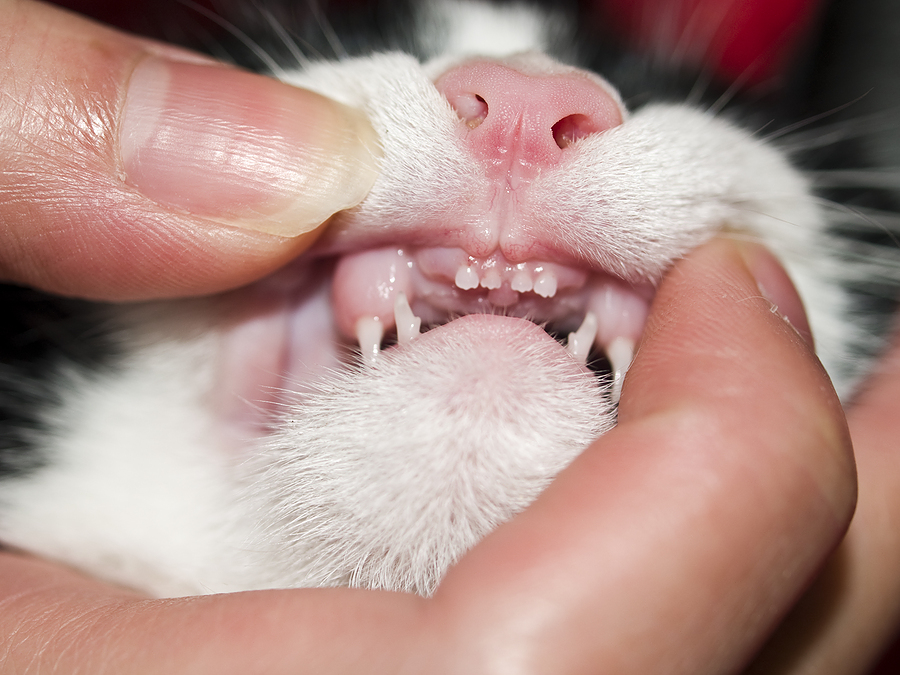

 Here’s a good rule of thumb when choosing a chew toy: if you can’t easily bend it with your hands or if you wouldn’t want to be hit in the knee with it, don’t give it to a pet. Wild dogs and wolves often have multiple fractures in their mouths due to chewing on bones.
Here’s a good rule of thumb when choosing a chew toy: if you can’t easily bend it with your hands or if you wouldn’t want to be hit in the knee with it, don’t give it to a pet. Wild dogs and wolves often have multiple fractures in their mouths due to chewing on bones.

